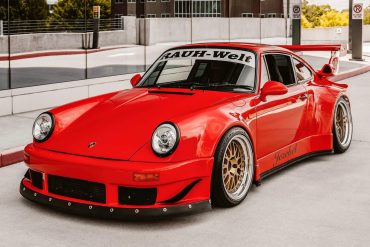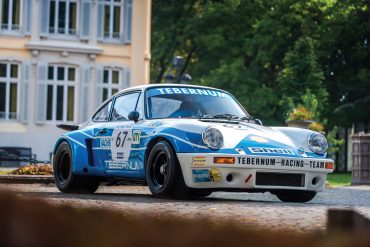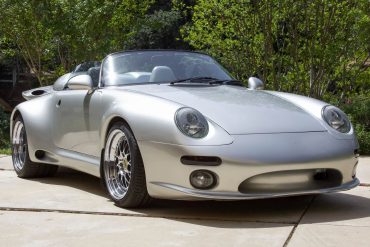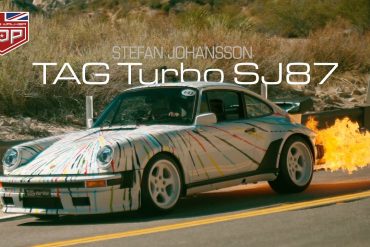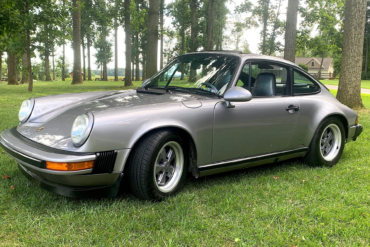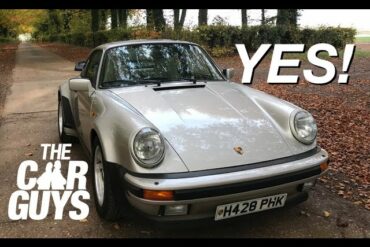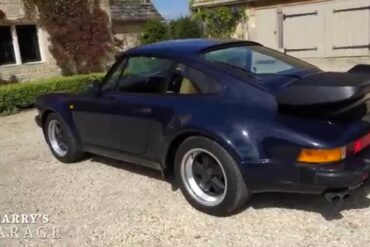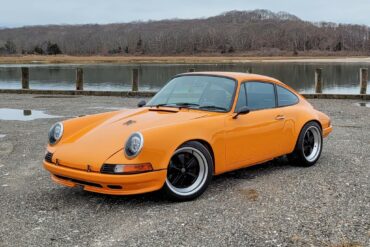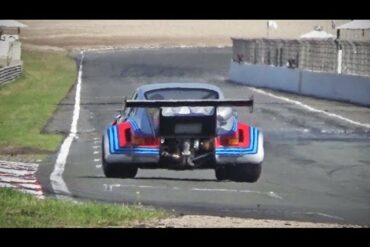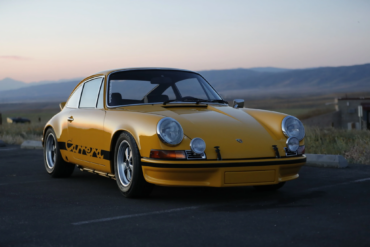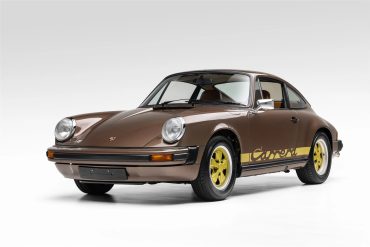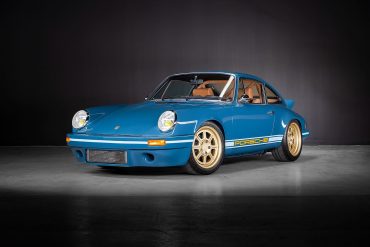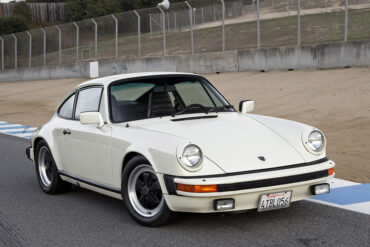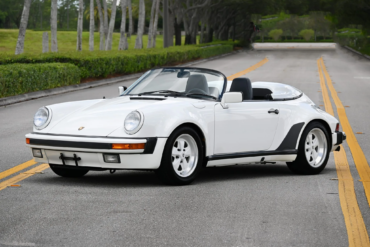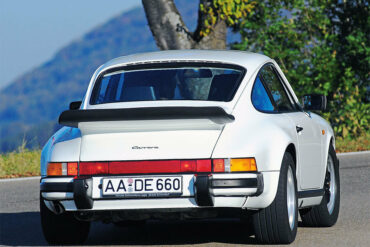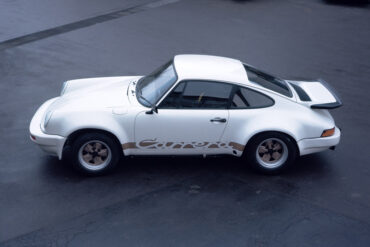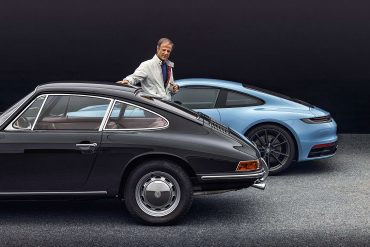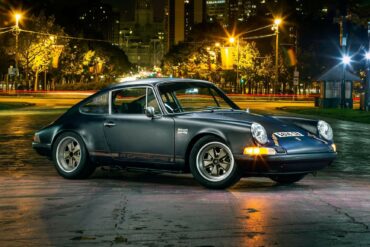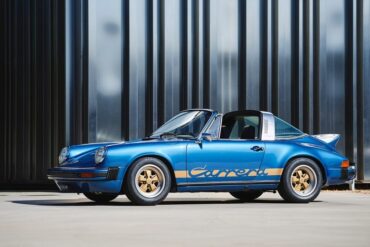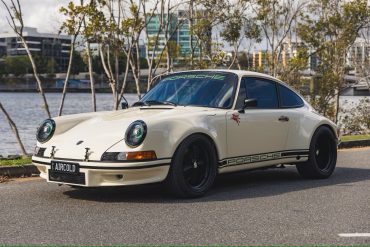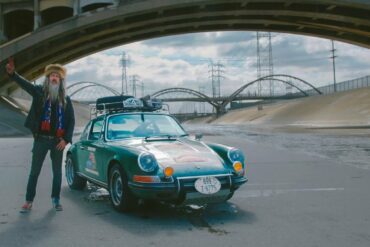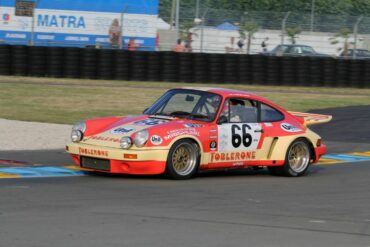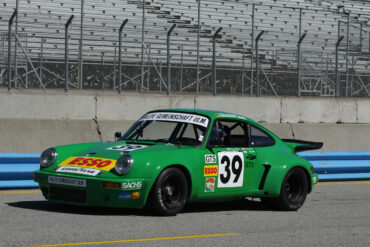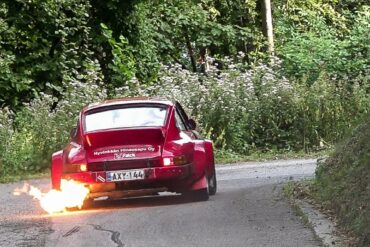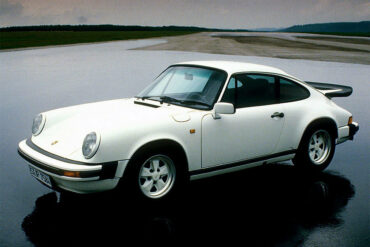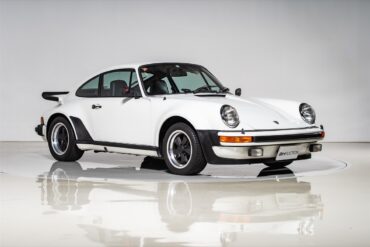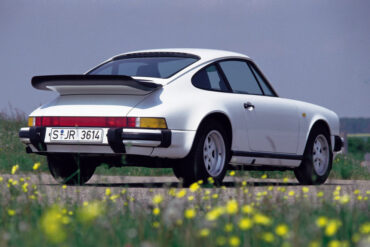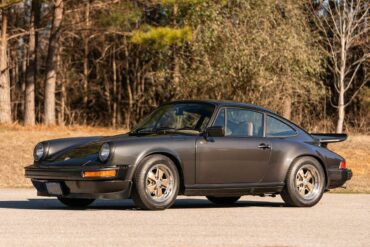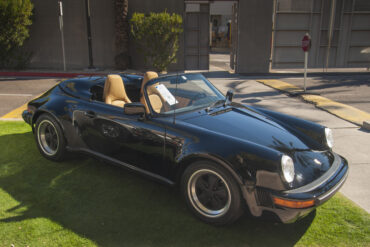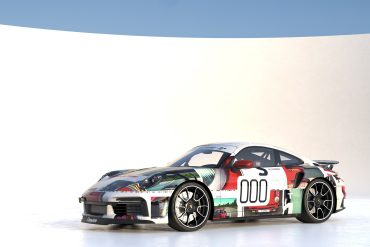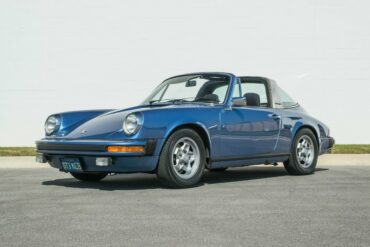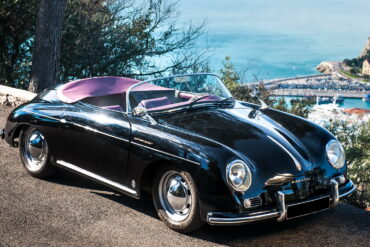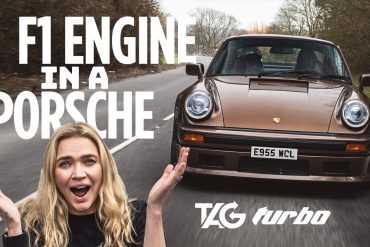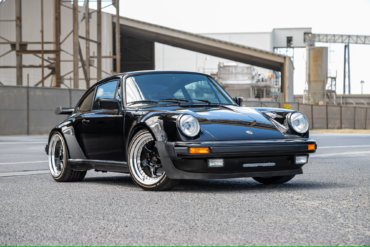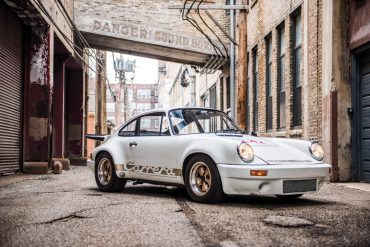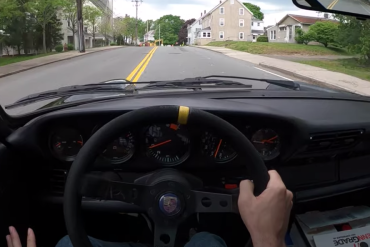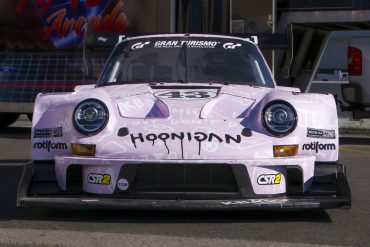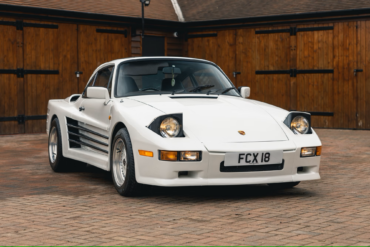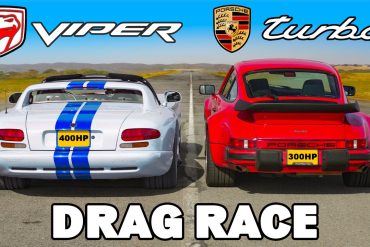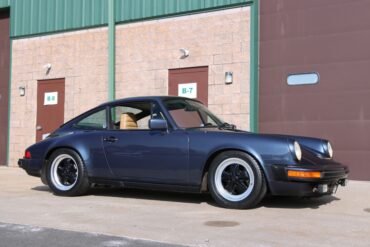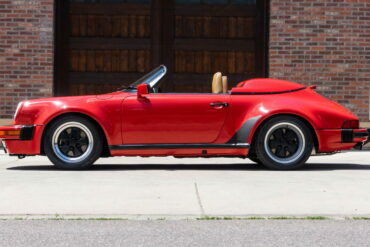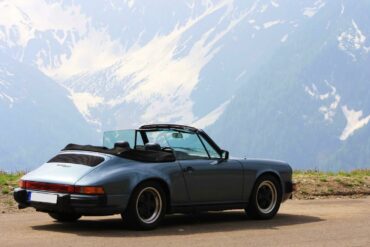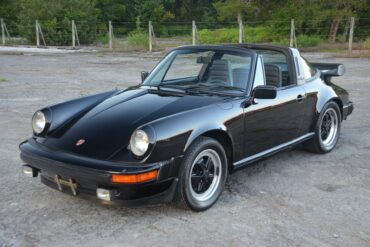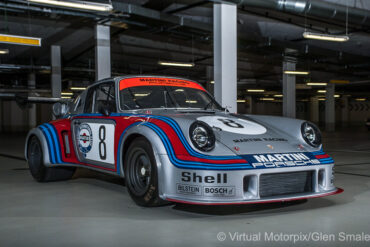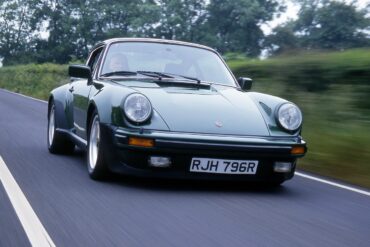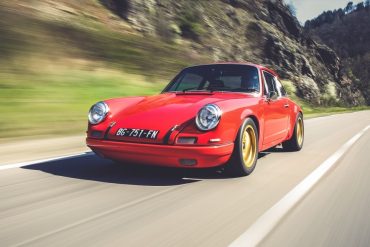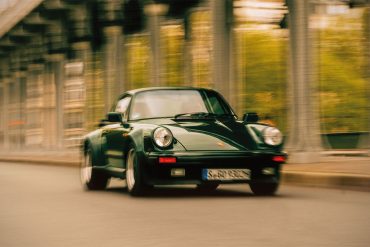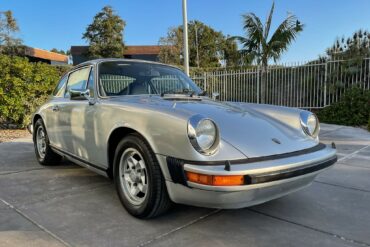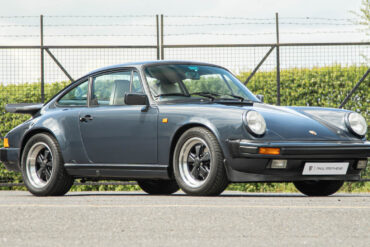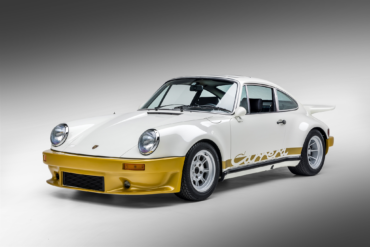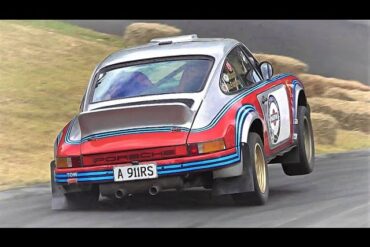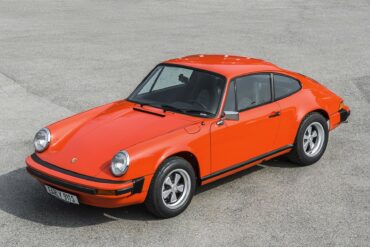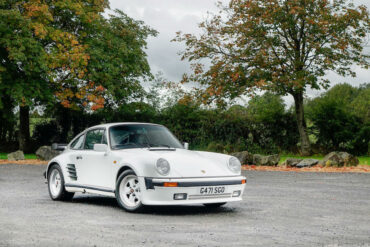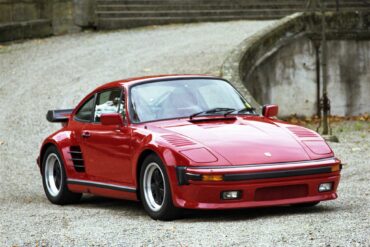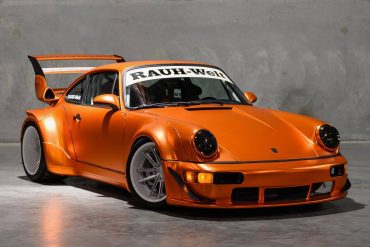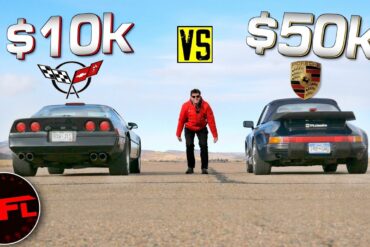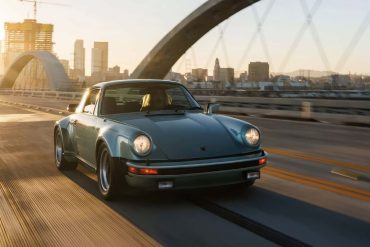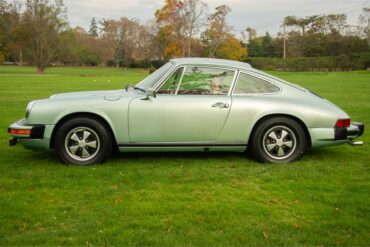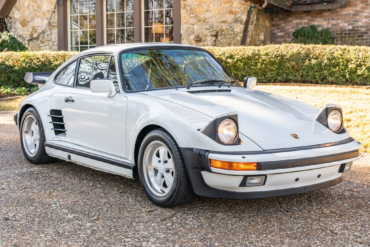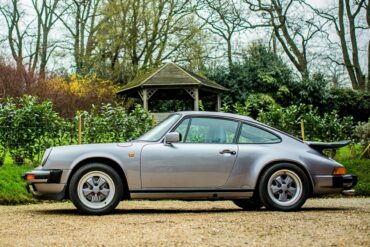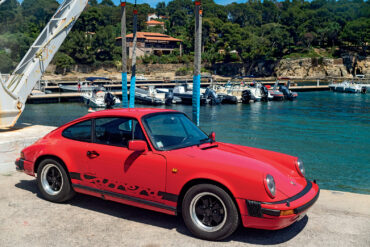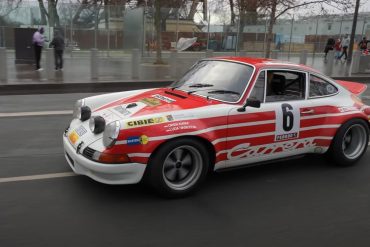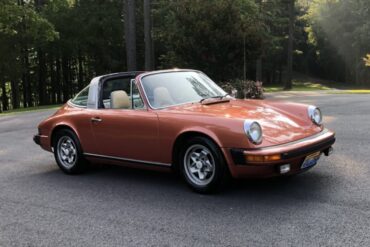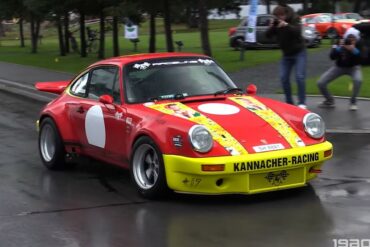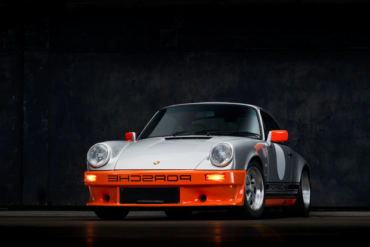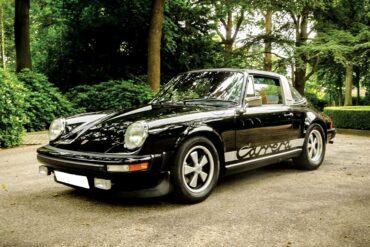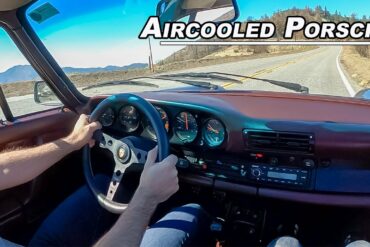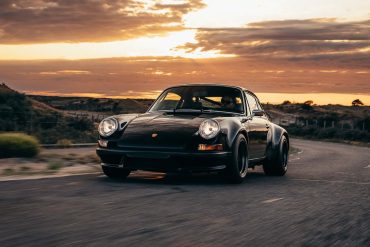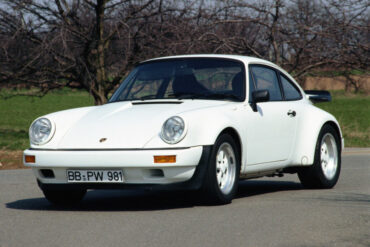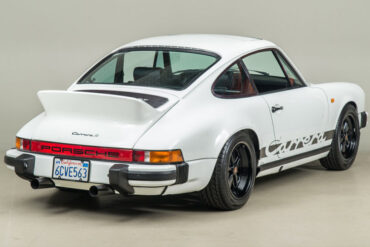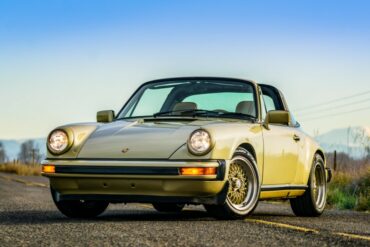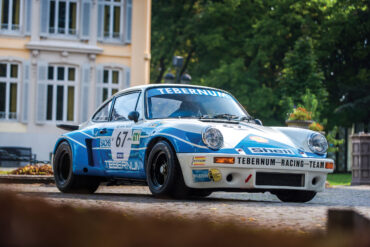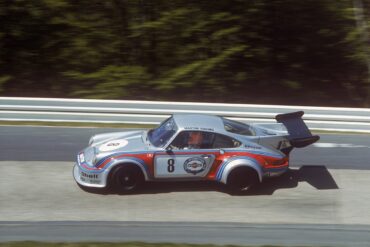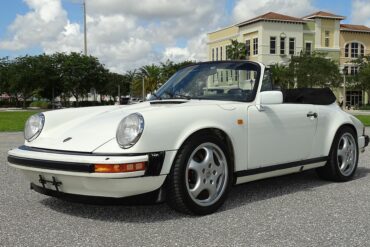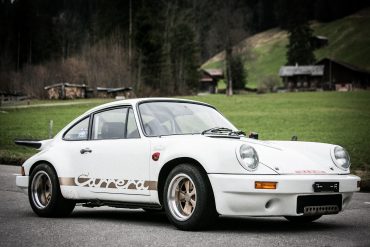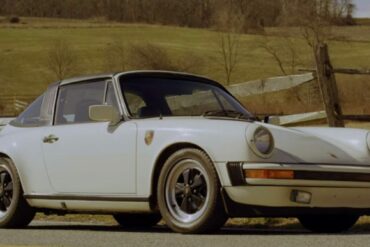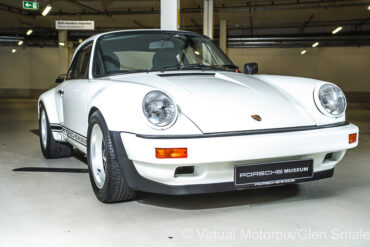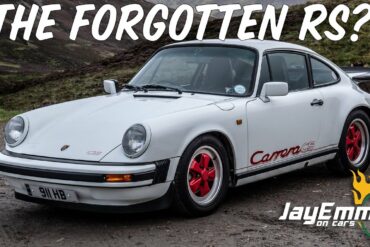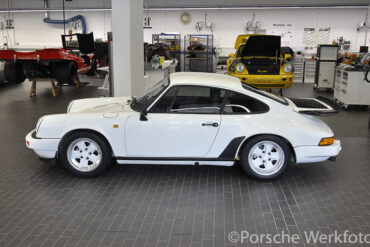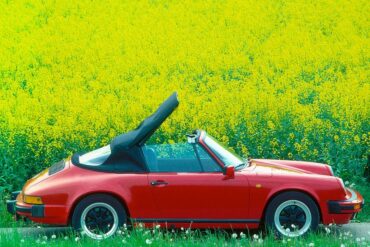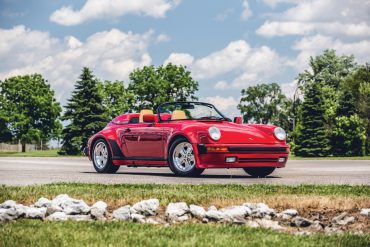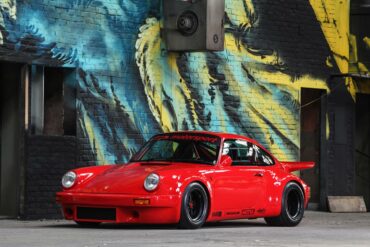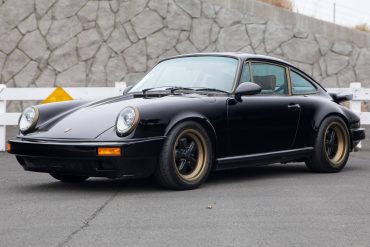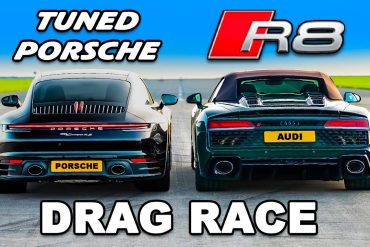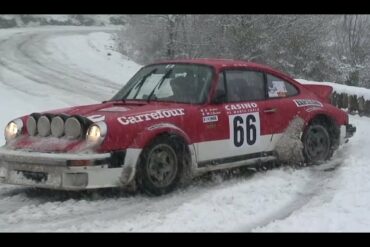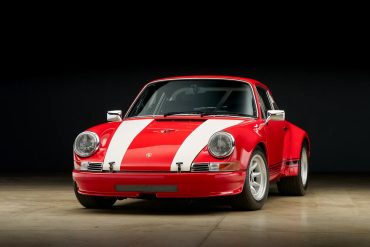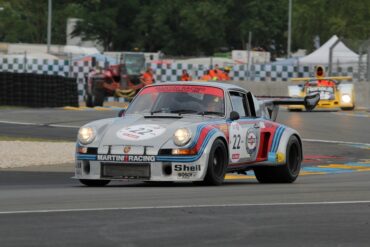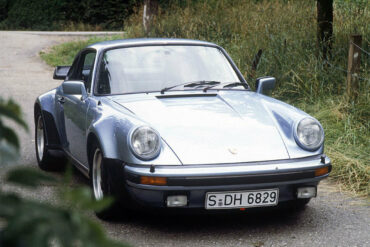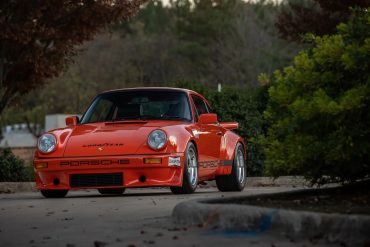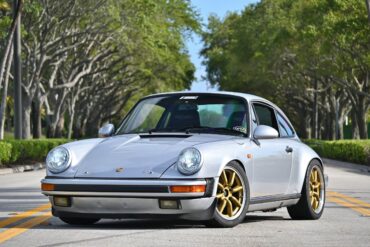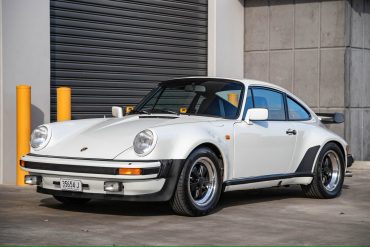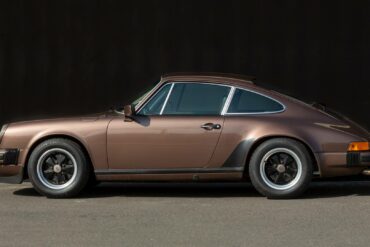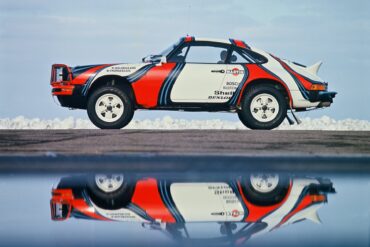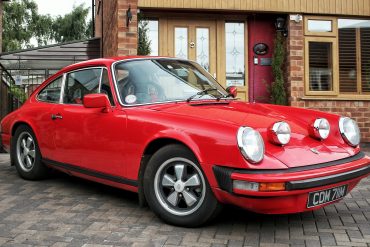As a successor to the Carrera 2.7 MFI, the Carrera 3.0 was fitted with a variation of the 930's engine without a Turbo. During its production period only 3,687 cars were made. The Carrera 3.0 was replaced by the Porsche 911 SC for model year 1978. Between 1976 and 1977, Porsche introduced the Carrera 3.0 with wide rear flares, optional whale-tail, and other luxury options. Built before the ‘911 SC’ it has everything the SC has, and more. It’s a different drive with more power @200bhp; more torque @188 ft/lb @4200rpm and it was 10% lighter too.
Porsche 911 (G-Series)
The Porsche 911 G model was a true perennial and was built for a full 17 years. During this time, engines were built with 2.7, 3.0 and 3.2 liters. The narrow G-model (from 1974 to 1977) over the 911 SC, the Carrera 3.0 to the Carrera 3.2 gave it a large variety of variants, colors and equipment. The G-Body saw the introduction of impact bumpers to conform with low speed protection requirements of U.S. law, these bumpers being so successfully integrated into the design that they remained unchanged for 15 years. In 1974 the engine size was increased to 2,687 cc, giving an increase in torque. The use of K-Jetronic CIS Bosch fuel injection in two of the three models in the line up – the 911 and 911S models, retaining the narrow rear wings of the old 2.4, now had a detuned version of the RS engine producing 150 and 175 bhp (110 and 129 kW) respectively. See all of our G-Body (2nd Gen 911) Research.
All
- 911 (G-Series)
- 911 Carrera 3.0 (G-Series)
- 911 S (G-Series)
- 911 SC (G-Series)
- 911 Carrera 3.2 (G-Series)
- 911 Turbo (930)
- 911 SC Safari
- 911 Carrera RSR Turbo 2.1
- 911 Carrera RSR 3.0
- 911 SC San Remo
- 911 Carrera 3.2 Clubsport
- Porsche 953
- 911 Carrera RS 3.0
- 911 SC RS
- 911 Carrera 25th Anniversary
- 911 Turbo LE
- 911 3.2 Speedster
- 911 Carrera Commemorative
- 911 Carrera 2.7 (G-Series)
- 911 Turbo 2.7
This is the seventh RWB creation, known as “Jezebel.” This remarkable 1989 Porsche 911 Turbo has undergone a remarkable transformation,...
The Carrera RSR 3.0 is one of those rare and super-special Porsches, and one of the most successful Group 4...
This 1989 Porsche 911 Speedster pays homage to the original 356 Speedster, featuring a distinctive short, sharply angled windscreen and...
In the world of automotive enthusiasts, the fusion of history, engineering, and art often leads to extraordinary creations. One such...
In 1988, Porsche unveiled the “Commemorative Edition” Carrera (also called the Jubilee Edition) to celebration the 250,000th 911. Porsche built...
Porsche 930 Turbo – One of the Greats Remember that episode where Damian mistakenly bought a broken Porsche 911 from...
A Legend Reviews A Legendary Car...
This 1981 Porsche 911SC Coupe underwent a custom backdate-style restoration that spared no expense on high-end equipment. The Coupe was...
Carrera RSR Turbo On Track Fun At this year’s Historic Grand Prix I was lucky enough to capture this 1974...
This 1977 Porsche 911 Carrera 3.0 was a European-market example that was backdated to look like a 1973 Carrera RS....
In 1974, Porsche offered a high performance fuel injected Carrera specifically for the European market. These were close to 2.7...
This custom Porsche 911 is a unique creation by CC Speedline of California, built for the owner of the company,...
Porsche Option Codes – Porsche 911 (1978 Model Year) Looking to decode your 1978 Porsche 911 option codes? Want to...
Don’t miss your chance to own a beautiful and highly original example of a 1989 Porsche 911 Speedster on Bring...
1984 – 1989 Porsche 911 Carrera 3.2 Technical Specifications USA-Market Cars Engine USA (1984 – 1986) USA (1987 – 1989)...
Following the famous 1973 F-model 911 Carrera RS 2.7, Porsche built its successor based on the G-model and it was called the 911 Carrera RS 3.0. With its 172 kW engine, it was the most powerful series production street-legal Porsche made so far. With its new 3.0-liter engine, featuring mechanical fuel injection, it was capable of 230 hp. While 1,580 Carrera RS 2.7s were built for 1973, only 56 Carrera RS 3.0s were built for 1974.
Evolution, not Revolution Since its debut in 1964, the Porsche 911 has epitomized engineering evolution. Conceived by Ferdinand “Butzi” Porsche,...
ROCS Motorsports reimagined a 1984 Porsche 911 Carrera Coupe with a custom backdate restoration between 2020 and 2021. The “Philadelphia...
1974 – 1976 Porsche 911 Carrera 2.7 (MFI) Targa Pictures & Gallery...
This Porsche 911 SC has been backdated to ‘F-model’ styling, featuring various modifications. It’s powered by a naturally aspirated 3.6-liter...
Magnus Walker showcases a 1986 Porsche 911 modified to resemble a vintage 1970s sports car with almost 350,000 miles on...
1974 – 1975 Porsche 911 Carrera RSR 3.0 Pictures & Gallery ...
1974 -1975 Porsche 911 Carrera RSR 3.0 Technical Specifications Engine Configuration 911/75 B6 Location Rear, longitudinally mounted Construction magnesium alloy...
Best of Porsche Rally Cars Check out this compilation i made for one of the most recognizable racing car in...
1987 – 1989 Porsche 911 Carrera 3.2 Clubsport (911) Technical Specifications Model 3.2 Clubsport Year 1987 – 1989 Price When...
Porsche Option Codes – Porsche 911 (1976 Model Year) Looking to decode your 1976 Porsche 911 option codes? Want to...
The 911 Carrera Club Sport was Porsche refocusing on what they do best – high performance, lightweight motoring. This is probably the most underrated Porsche ever made. Manufactured between August 1987 and September 1989 only 340 cars. It had a blueprinted, high revving engine mated to a modified short-shift, close-ratio G50 gearbox. It had track-bias suspension modifications too.
In 1980, a true limited edition model 911SC was produced for the American market. The 'Weissach' edition was a standard SC with special paint. It was built in 1980 to honor the Porsche Motorsport team working in Weissach Germany. 468 units were made and half were painted Metallic Black, the other half in Platinum Metallic. The interiors were wrapped in Doric Grey leather with burgundy piping. Additional body and mechanical specs included whale tail spoiler, Bilstein dampers and Fuchs wheels.
1989 Porsche 911 3.2 Speedster (911) Technical Specifications Price $ USD $65,480 Engine Air-cooled Flat-6 Valvetrain SOHC Displacement 3164 cc...
Even before the 2022 Pikes Peak Hill Climb, it has already been reported that David Donner will attempt to beat...
Porsche Option Codes – Porsche 911 (1974 Model Year) Looking to decode your 1974 Porsche 911 option codes? Want to...
Porsche Option Codes – Pre 1970 (356, 550, 904, 911, 912) Looking to decode your pre-1970 Porsche option codes? Want...
Lanzante, renowned for their conversion of McLaren F1 and P1 GTRs into road-legal vehicles, is currently in the process of...
The 911 SC effectively replaced the 911 S and was one of Porsche's first models that was meant for the international market. It was sold as a cheaper alternative to the 911 Turbo. The SC used an unblown version the 930 Turbo unit that offered 180 to 200 bhp depending on model year. Options included the rear whale tail, front chin spoiler, Bilstein dampers, 16 inch wheels with Pirelli P7 tires and sports seats. Sometimes dealers lumped these options together to create their own sport package. It was available as a Coupe and Targa from 1978 - 1983, while the Cabriolet version was only available in 1983.
Collecting Cars is proud to offer a striking example of a 1978 Porsche 911 3.0 SC featuring an all-black colour...
The 1974 Porsche 911 Carrera RS 3.0 stands as the ultimate evolution of the naturally aspirated Porsche 911 designed for...
A great video of a 1988 911 3.2L Carrera on its way to Bond Group for some light maintenance. Sounds...
If you think post-war sports cars or muscle cars from the late 1960s are the staple of the collector car...
The Rinspeed Porsche R69 Turbo, aka Porsche Testarossa, was a limited production car from Switzerland. It is believed that around...
In a head-to-head competition presented by carwow, two classic cars, the 1986 Porsche 930 Turbo and the 1992 Dodge Viper,...
Porsche Option Codes – Porsche 911 (1980 Model Year) Looking to decode your 1980 Porsche 911 option codes? Want to...
Essentially a Carrera 3.2 with a chopped, more steeply raked windscreen and hood, plus a stripped-out interior. Most had wide Turbo bodies. Porsche insisted that the simple hood was not designed to be 100 per cent watertight. The first Porsche 911 Speedster was built in 1989 and it was the last vehicle with the old 911 body. Three decades passed before the Speedster made a comeback. Had a 3.2 L Aircooled Flat 6 and 2274 were produced for the 1989 model year.
1983 Porsche 911 SC Cabriolet Pictures & Gallery ...
Porsche Option Codes – Porsche 911 (1983 Model Year) Looking to decode your 1983 Porsche 911 option codes? Want to...
The year 1974 will be remembered for many different reasons, depending on where you were living in the world at...
1975 -1977 Porsche 911 Turbo 3.0 (930) Technical Specifications Type Series Production Car Production Years 1974 – 1979 Built At...
The MR12 Force Rouge, created by Machine Revival, embodies the spirit of the cafe racer design and is built for...
The 1988 Porsche 911 Carrera underwent a backdating process and received an RWB widebody kit by Porsche tuner Akira Nakai....
The 1974 world premiere of the 911 Turbo at the Paris Motor Show caused a sensation. Half a century later,...
Going Global Luftgekühlt – the hit Californian-born gathering of air-cooled Porsches – lay down new roots in Europe in mid-June,...
Commemorating 25 years of Porsche sports car production, the 911S Silver Anniversary Edition is distinguished by unique Diamond Silver Metallic paint and a special black leatherette and tweed interior. The first of Porsche’s commemorative ‘celebration’ cars, this Silver Anniversary was produced in a limited run of 1,063 examples, of which approximately 500 are reported to have made their way to the United States.
The replacement for the SC series came in 1984 as the 911 3.2 Carrera, reviving the Carrera name for the first time since 1977. This was the last iteration in the original 911 series, with all subsequent models featuring new body styling and new brake, electronic, and suspension technologies. Almost the same galvanised body as the SC. Engine was claimed to be 80 per cent new, and the first production 911 to feature an ECU to control the ignition and fuel systems.
Bring A Trailer is currently offering a 1977 Porsche 911S coupe that has been modified in RSR style from its...
Now That’s What I Call Driving This is Stuart McFarlane´s beautiful Porsche 911 SC Safari, a 1974 machine built to...
1974 – 1977 Porsche 911 S 2.7 Coupe Pictures & Gallery...
Only 50 units made. The 911 Turbo Limited Edition comes equipped with the 330 bhp power unit normally only available in the 911 Turbo with Sport Equipment. In addition, the fitment of a limited slip differential as standard ensures the the increased engine performance can be used to it’s fullest extent. This Limited Edition also adopts the rear wheel air intakes of the Sport Equipment version. Essentially an SE without a slantnose front.
Slantnosed and based on that of the 935 racecars, with pop-up headlamps. The front spoiler was made deeper in order to accommodate the extra oil cooler, while intakes in the rear wings fed air to the brakes. The larger turbocharger and four-outlet exhaust gave 30bhp of extra power. Porsche began their “special order program” offering a Flachbau option (Slantnose) for the 930 in very limited production. All of this at a cost of nearly 2 times the standard 930S.
Meet “Chrome Temple,” a custom-built 1979 RWB Porsche 911 SC. This exceptional 911 received a powerful 500HP+ small block V8...
The Porsche 911 Carrera 3.2 was produced for model years 1984 to 1989. If you are looking to get into...
In the distinguished circles of Porsche enthusiasts, Magnus Walker’s 1977 Porsche 930 Turbo Carrera holds an esteemed position. This automotive...
1976 Porsche 912 E Pictures & Gallery...
If you head over to Bring A Trailer now, you’ll have the chance to acquire one of the reported 33...
In 1988, Porsche produced 875 examples of the CE or Commemorative Edition 911 Carrera in coupe, targa and cabriolet variants to mark the production of the 250,000th 911. Distinguishing features include special diamond blue metallic paint with color-matched Fuchs wheels, front and rear spoilers, and interior carpets and leather. These cars also featured Dr. Ferdinand Porsche's signature embroidered on the seats in the headrest area.
1976 – 1977 Porsche 911 Carrera 3.0 Technical Specifications Type 2+2 FHC Number of doors 2 Engine 3.0 L Aircooled...
The Carrera RSR 3.0 stands as a rare gem among Porsches, renowned as one of the most triumphant Group 4...
1974 – 1977 Porsche 911 2.7 Targa Pictures & Gallery...
A compilation video of the 2022 Bernina Gran Turismo hillclimb race winner, the beautiful Porsche 911 Carrera 3.0 RSR ‘IROC’...
For 1989, Porsche produced the 25th Anniversary Special Edition model to mark the 25th year of 911 production. The 1989...
1974 – 1975 Porsche 911 Carrera 2.7 Targa Pictures & Gallery...
POV In A Great Sounding 911 GVBC is a car enthusiasts dream! Every Friday morning a group of dedicated drivers...
This 1988 Porsche 911 Turbo underwent a custom Carrera RSR-style restoration with backdated bodywork including a classic long-hood nose section,...
1984 Porsche 911 SC RS (911) Technical Specifications Model 911 SC/RS – Type 954 Year 1984 Engine 6-cylinder, horizontally opposed...
Originally built by German tuner Gemballa, the Avalanche was more than just a cosmetic upgrade. Boasting a powerful single-turbo engine...
1965 – 1989 Porsche VIN Numbers Porsche used a variety of chassis and VIN numbering systems until 1981, when a...
Commemorating 25 years of Porsche sports car production, the 911S Silver Anniversary Edition is distinguished by unique Diamond Silver Metallic paint and a special black leatherette and tweed interior. The first of Porsche’s commemorative ‘celebration’ cars, this Silver Anniversary was produced in a limited run of 1,063 examples, of which approximately 500 are reported to have made their way to the United States.
For the 1974 racing season 911 Carrera RSR 3.0 (246 kW) and RSR Turbo 2.1 (338+ kW) were created - the 3.0L for the customer teams and the 2.1 turbo for Porsche’s own team. The Carrera RSR 3.0 was made in small numbers for racing. The 3.0 RSR would go on to become the most successful Group 4 racing car of its time thanks to its combination of low weight, immense Porsche 917 brakes, impeccable handling, and a 330+hp naturally aspirated flat-6.
For 1974 both the 911 Carrera RSR 3.0 and RSR Turbo 2.1 were created - the 3.0L for the customer teams and the 2.1 turbo for Porsche’s own team. The 911 Carrera RSR Turbo 2.1 developed 338-368 kW in power, but as the engine was small, the turbo lag was big and it wasn’t as easy to drive out of the corners as it was with the 3-litre normally aspirated car. Weight reduction measures included plastic hoods, fender flares and doors and an aluminium safety cage.
After producing no convertibles for 18 years, Porsche launched the 911 SC Cabrio in the spring 1983. The top made extensive...
1974 Porsche 911 Carrera RS 3.0 Pictures & Gallery...
Porsche Option Codes – Porsche 911 (1982 Model Year) Looking to decode your 1982 Porsche 911 option codes? Want to...
Built so that the factory Rothmans Porsche Rally Team could hit the international stage, the SC RS used the Turbo’s body with fibreglass bumpers and aluminium doors. In Autumn 1983, Porsche presents the 911 SC/RS for motor racing. The engine originates from the 911 SC, with improved performance achieved by the mechanical ball fuel injection, increased compression, the cylinder heads from the 935 and forged pistons. Racing seats are fitted in place of the standard seats.
The Best Driver’s Car Nobody Bought? Today I am driving a 911 Club Sport. A special version of the 3.2...
Porsche 911 Carrera 3.2 Clubsport (1985) in the Museum workshop As I’ve explained on the few occasions I’ve burst into...
1984-1989 Porsche 911 Carrera 3.2 Cabriolet Pictures & Gallery...
1984-1989 Porsche 911 Carrera 3.2 Coupe Pictures & Gallery ...
In 1989, Porsche marked the 25th anniversary of 911 production by introducing noteworthy offerings. Alongside a commemorative edition of their...
For over 43 years, DP Motorsport has been modifying Porsche models for both the racetrack and the road. Their latest...
This 1978 Porsche 911 Outlaw showcases a high-quality custom finish and a powerful 993 3.6L engine, delivering both visual excitement...
Who will win when you drag race a a tuned Porsche 911 Carrera 4S against an Audi R8 V10 Performance...
Best of Porsche Rally Cars...
This 1979 Porsche 911SC coupe was modified using a backdated bodywork along with a long-hood conversion, S/T-style decklid, bumpers, and...
1974 Porsche 911 Carrera Turbo 2.1 Pictures & Gallery...
1978 – 1989 Porsche 911 Turbo 3.3 (930) Technical Specifications Number of cylinders Boxer 6 Engine Code 930/60/66 Fuel type...
This 1979 Porsche was originally a 930 Turbo coupe before it was transformed and modified into a 911 RSR Tribute...
This lightweight hotrod, based on a Euro 911, is built for high-performance driving. With tasteful modifications, including a carbon fiber...
The 930 was the most capable supercar of its time and catapulted Porsche’s brand worldwide, keeping up with the likes...
1976-1977 Porsche 911 Carrera 3.0 Coupe Pictures & Gallery ...
In 1978, the works team fields two 911 SC at the East African Safari Rally. The name of game is to survive 5,000 kilometres of the toughest tracks in sweltering heat and torrential rain. The conditions take their toll: of the 72 starters, 13 reach the finish line. Martini Racing Porsche System Engineering signs on two specialists to drive: Sweden’s Björn Waldegård (Start No. 5) and Kenyan Vic Preston Jnr (Start No. 14).
1974 – 1977 Porsche 911 2.7 Technical Specifications Body Type 2+2 seater fixed-head coupé Number Of Doors 2 Dimensions &...



